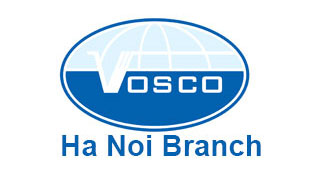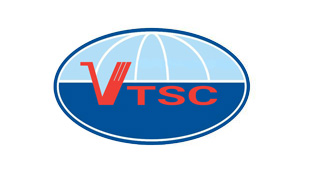Wonderful world of Trade
Seaborne trade provides the platform upon which the shipping industry operates. Back in 1992 world seaborne trade stood at an estimated 4.6 billion tones and in comparison current projections suggest that in 2017 it will reach 11.3 billion tons. That’s 2.5 times bigger than 25 years ago (see table). Iron ore trade is projected to be 4.3 times larger than back in 1992, LNG trade 4.5 times larger and container trade a mighty 6.3 times more volumninous. The 2017 sea-borne trade estimate represents about 1.5 tonnes per person on the planet. That’s quite some performance all round and keeps the world of shipping turning.
|
Item |
1992 |
2017 |
Multiple |
|
Iron Ore |
345 |
1.478 |
4.3 |
|
Coal |
357 |
1.128 |
3.2 |
|
Grain |
224 |
486 |
2.2 |
|
Minor Bulk |
798 |
1.886 |
2.4 |
|
Crude Oil |
1.332 |
1.937 |
1.5 |
|
Oil Products |
381 |
1.090 |
2.9 |
|
LNG |
60 |
272 |
4.5 |
|
LPG |
37 |
90 |
2.5 |
|
Containers |
283 |
1.798 |
6.3 |
|
Others |
783 |
1.173 |
1.5 |
|
Total Seaborne Trade (m.tonnes) |
4.600 |
11.339 |
2.5 |
My how big you’ve grown
Meanwhile, shipping capacity has also expanded equally rapidly. The fleet has grown by a multiple a little greater than that registered by trade over the 25 year period. At the start of 2017 the global fleet totaled 1.86 billion dwt compared to 621 million dwt at the start of 1992. That’s a multiple of 3.0 times larger. Of course, over the period there have been changes to vessel productivity, not in the least the moderation of service speeds in many sectors in the post-Lehman down turn.
|
Type of ship |
1992 |
2017 |
Multiple |
|
Tanker |
265,5 |
554,6 |
2.1 |
|
Bulkcarriers |
214,9 |
794,0 |
3.7 |
|
Combos |
32,2 |
2,6 |
0.1 |
|
Gas Carriers |
12,4 |
59,8 |
4.8 |
|
Containerships |
30,7 |
245,6 |
8.0 |
|
MPP |
17,7 |
29,7 |
1.7 |
|
Ro-Ros |
6,7 |
7,7 |
1.1 |
|
PCC |
4,1 |
12,2 |
3.0 |
|
Reefers |
8,1 |
5,0 |
0.6 |
|
Total Global Fleet (M.dwt) |
621,0 |
1.861,9 |
3.0 |
What things cost these days
Alongside these significant changes, the value of shipping assets has seen more mixed trends. A 5 year old VLCC was 8% cheaper at the start of 2017 (in current terms) than at the start of 1992 but such us the state of play in the bulkcarrier market that a 5 year old Capesize is 43% cheaper. Adjust these for inflation and the values look even lower. On the other hand the scrap value of ships is higher $/ldt ship steel scrap price.
|
|
1992 |
2017 |
Change (+/- %) |
|
1. Vessel Earning ($/day) |
|
|
|
|
ClarkSea Index |
11.700 |
11.092 |
-5,2% |
|
VLCC 1 year T/C Rate |
34.000 |
31.750 |
-6.6% |
|
Capesize 1 year T/c Rate |
22.000 |
9.350 |
-57.5% |
|
2. Asset Values |
|
|
|
|
Newbuilding Prices ($m) |
|
|
|
|
VLCC |
90,0 |
84,5 |
-6.1% |
|
Capesize |
56,0 |
42,0 |
-25.0% |
|
5 Year Old price ($m) |
|
|
|
|
VLCC |
65,0 |
60,0 |
-7.7% |
|
Capesize |
42,0 |
24,0 |
-42.9% |
|
Scrap prise ($/ldt) |
|
|
|
|
ISC Dry Cargo |
160,0 |
290,0 |
+81,3% |
Economic Activity
Despite the recent commodity price down turn, raw material overall are sub-stantially more expensive than back in 1992. Brent crude stood at $54.8/bbl at the start of 2017 compared to $18.2/bbl in early 1992 and iron ore at $76.3/tonne compared to #33.1/tonne. Bunker from $69.0/tonne to $312.5/tonne.
Elsewhere only $1.24 of shipping’s universal currency is now needed to buy one pound sterling, compared to $1.83 back in 1992, but USD borrowing (6 –month LIBOR) is much less dear at $1.3% rather than 4.2%. The world economy is still growing more quickly than back in 1992, projected at 3.4% in 2017 compared to 2.3%, and is over 3 times bigger at about $79 trillion. The size of che Chinese economy has rocketed from $0.5 trillion to $12.4 trillion, and the world’s population has expanded from 5.5 to 7.4 billion.
Nothing Changes?
Last of all, some things never seem to change. At the start of 1992, the ClarkSea Index of vessel earnings stood at $11,700/day. At the start of 2017 it stood just 5.2% lower at a remarkably similar $11,092/day. In between the index once tipped over $50,000/day; that’s a cyclical business for you!. Now let see what changes the next 25 years throw up.
(Source: Shipping Intelligence Weekly, Clarkson Research Services Ltd.)






















